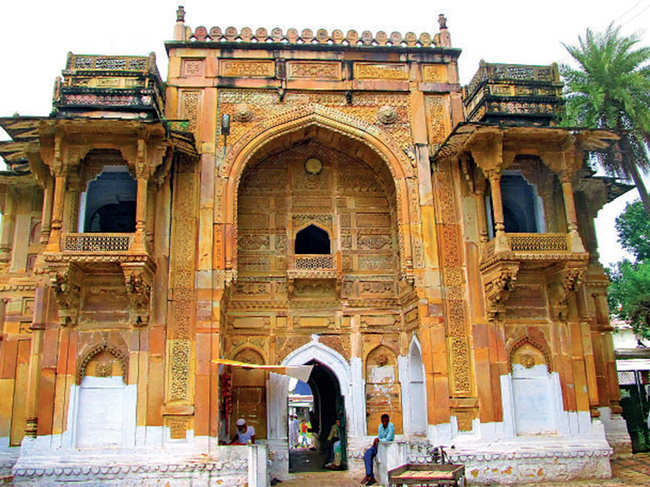 Agencies
AgenciesFor a history buff, the highlight of the district is undoubtedly the town of Chunar. Especially its fort, perched on a high rock overlooking the broad magnificence of the Ganga as its sweeps eastwards towards the sea.
At the time of the visit to Chunar, the fort was under the charge of a unit of Uttar Pradesh's Provincial Armed Constabulary (PAC) and had even served as a training centre for them. In many historical spots, the sight of armed men guarding the premises may seem of place, but that's not the case with Chunar.
 Agencies
AgenciesFor centuries, Chunar Fort has been the preferred base in the region for militaries to occupy. Armed men are par for the course as part of the garrison here. The fort gives a commanding view of the countryside around, and gun emplacements in its walls enabled the fort garrison to control riverine movement. As per Cotton's list, the earliest record of a settlement at Chunar dates to 56 BC, to a ruler called Vikramaditya, who ruled the kingdom of Ujjain.
Pre-Historic Mirzapur
Archibald Carlleyle discovered rock paintings at Sohagihat in the Mirzapur district of Uttar Pradesh in 1867 and 1868. His failure to publish his notes meant these pre-historic sites remained obscure. More recent research has revealed the extensive nature of rock art sites in the district. Another reason to explore the place!
The tablet then takes a thousand-year leap to Prithviraj ‘Rai Pithora’, which is a reference to the last Chauhan ruler of Delhi, given the dates. A Muhammad Ghori comes next, but whether that invader ever made it this far into the Gangetic plain is doubtful. A clear record of the fort begins from the time of Babur, whose soldiers took the fort. It later switched hands to Sher Shah Sur and eventually became part of Akbar’s realm. In fact, much of what is seen at Chunar Fort today was built under Akbar’s patronage.
 Agencies
AgenciesPost the decline of the Mughals, the fort was juggled between the Nawab of Awadh and the East India Company, with the latter eventually emerging triumphant. Amongst various other uses, the British also used Chunar as a prison for state prisoners.
Notable among these was Rani Jindan, wife of the Sikh ruler Maharaja Ranjit Singh. However, she added a sensational chapter to Chunar’s history by escaping from the fort in the guise of a servant. The Chunar of today gives glimpses of its past. Below the fort is a British era cemetery, with many of the gravestones reflecting lives lost in childhood.
Further away is a massive complex built around the Dargah of Shah Qasim Sulaimani. Whatever Chunar’s past, the place is today in favour for Bollywood. The near cult-movie Gangs of Wasseypur was shot in Chunar. The place is quiet today and there can be few better ways of spending a winter morning here and explore at your own pace.
 Agencies
Agencies














 Get Unlimited Access to The Economic Times
Get Unlimited Access to The Economic Times
